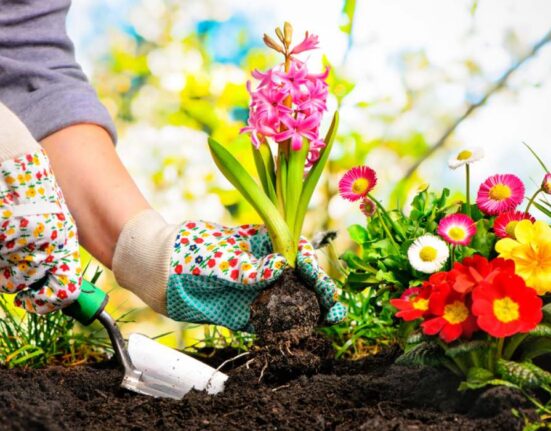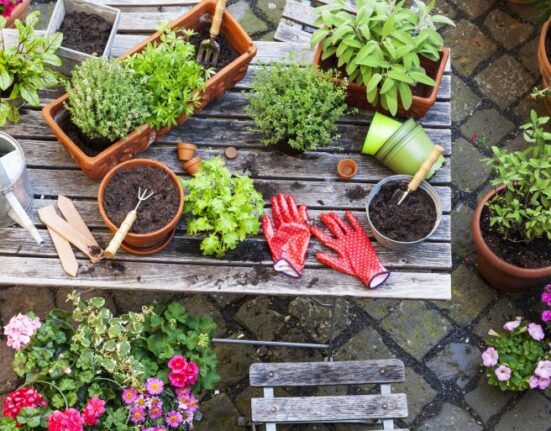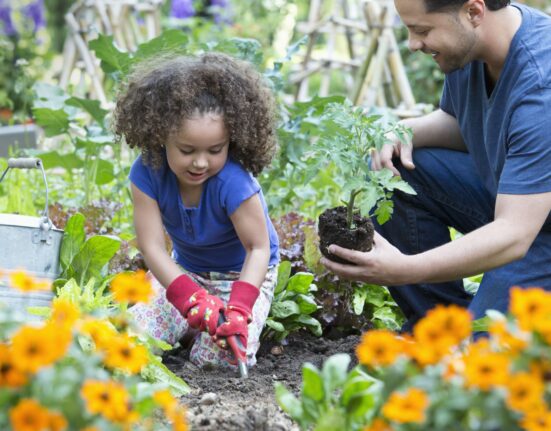Planning your home garden is like planning an itinerary for a trip. You want to take in as much of the sights, sounds, and smells as possible. The same goes for your home garden. It should showcase the beauty of your natural surroundings and showcase the things you grow and produce in your own backyard.
That’s why it’s important to plan ahead of time. You can have multiple gardens at one home so long as they are all accessible from one entry point and at least 20 feet from each other. This means having separate paths between individual gardens, but no need to build fences between them or separate them completely with a buffer zone (such as a fence or hedge).
Here are some simple tips on how to plan your home garden:
Know what you want your garden to be
The first step to planning a home garden is to understand what you want your garden to be. Is it a small space with a few herbs and vegetables? Is it a large space with multiple beds or raised beds where you can grow a variety of crops? Is it a vertical garden where you can grow seedlings and fruits on a trellis?
Knowing what you want your garden to be will help you determine what you should be growing in your garden. For example, if you have space for a large garden, you might consider setting up a veggie garden with a few plots surrounded by a larger herb or flower bed. If you have a small backyard and limited space, you may be able to grow only a few herbs or flowers.


Plan your location and shape your space
Next, you need to assess where your home garden will be located. Will you be growing it in a sunny area or a shaded spot out back? Is the soil in your area suitable for your home garden? Location is important for home gardens for two reasons. The first is that you’ll want to find a spot that gets the most possible sunlight. The second reason is that you want to find a spot that gets the most air circulation.
This will help prevent rot, pests, and diseases. A wide open area in the back of your property might work for planting a small number of flowers or herbs, but it isn’t ideal for growing a vegetable garden. A spot near a fence or building will limit the amount of air circulation and thus lead to increased growth of disease and pests. A spot near a building or fence that provides partial shade will result in much less sunlight reaching your garden and thus lower yields.
Decide on the right lighting
Lighting is key to a successful garden. If you have a sunny area in the backyard, you’ll want to choose a location that gets plenty of sunshine. If not, you can use grow lights to supplement the sunlight your area receives. In areas that receive a lot of shade, you might want to add a grow light.
A grow light is a specially designed artificial light that can be used to grow plants. Most come with a reflector that gives off the perfect amount of light for gardening. You can also get grow lights that are designed for indoor gardening. These lights come with a cord so you can place them where they give off the perfect amount of light for your home garden.


Plant an edible oasis
Gardens are meant to be used. You can’t just have one and expect the people who interact with your home garden to use it as well. If you have a large space and don’t have a lot of people who visit, you can grow a large amount of food that can be used for parties or picnics. This will also help you avoid running out of food. Don’t want to grow a large amount of food? No problem.
You can also plant a small number of herbs, flowers, veggies, or fruit. This will create an edible oasis in your backyard. This will look great and add a unique element to your home. People will be able to enjoy the scents of the herbs and flowers while sitting on your patio, deck, or lawn. You can also use the herbs and flowers in your home garden to create a very aromatic oasis.
Add in vertical elements
Vertical elements can be used to create a sense of space in your backyard garden. This can be accomplished with a trellis or a pergola. A trellis is a structure that supports climbing plants. These can be fruits, herbs, or vegetables, depending on the type of plants you want to grow.
A pergola is a structure that is open on one side. This can be placed over a water feature or a pond, or it can just be used as a trellis to support vines. Vertical elements are great for creating a sense of space and can also help increase air circulation in your backyard.


Add in sensory elements
Sensory elements are great for creating a relaxing atmosphere in your backyard. This can be accomplished by creating a soundscape with water features, hanging baskets, or even wind chimes. Water features are great for creating relaxing sounds. You can create a simple bubbling brook or install a koi pond and use it as a fish spa. Hanging baskets are great for adding vibrant colors to your backyard.
You can also use them to create a sensory element by adding plants that produce aromatic oils. Wind chimes create a soothing sound that can be used to create a relaxing atmosphere in your home garden. Wind chiming is a popular hobby in itself. You can choose from a wide range of wind chimes. This will allow you to create a soundscape in your backyard that will lull you to sleep when you need a break.
Don’t forget the hardscaping
Hardscaping is the term used to describe the elements in your backyard that are designed to be difficult to access or change. This can include a paved pathway or deck, a retaining wall, or a fence. Properly designed hardscaping will make it difficult for people to access your backyard.
This will also make it difficult for people to damage your backyard. This will make it easier for you to protect your home garden from being damaged by people. Protecting your home garden is important for two reasons. The first is that it will prevent people from damaging and destroying your garden. The second is that it will help prevent people from accessing your home garden.


Conclusion
With proper planning and execution, you can create a beautiful home garden. The key is to choose plants that are suited to the region where you live. You can also utilize vertical elements to provide a sense of space and create a relaxing atmosphere. Don’t forget to protect your home garden with proper hardscaping. This will help ensure that people don’t damage your garden, and it will also provide you with a place to keep your garden out of the elements.








